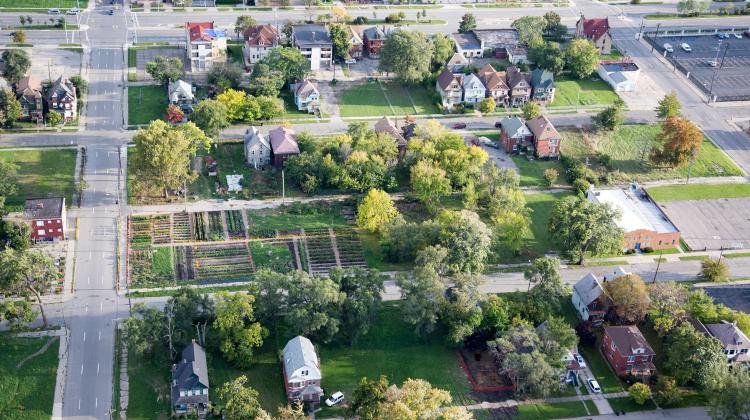Detroit’s local tax structure emerges from a decades-long history of industrial restructuring, migration patterns, and a host of other factors that have depopulated and reshaped the city, including migration to suburbs due to subsidized highway development, white flight and racial unrest, and employment dispersion. The consequence of these trends is a persistent, self-reinforcing dilemma: properties of all types are taxed at rates that exceed most other large United States cities but have the lowest market values of any large city. Over time, chronically low taxable values cause local governments to pass higher tax burdens onto each dollar of property value, hastening capital flight and causing further reductions in the tax base. Without a good option to stabilize revenue, cities in distress will cannibalize remaining property value.
Collecting more taxes on fewer properties has created significant challenges for residents and investors in Detroit. High tax rates on residential properties correspond to higher rates of tax delinquency, home abandonment, and foreclosures. Meanwhile, almost all new construction requires fixed-term or permanent exemption from the tax structure. Detroit property owners need incentives that reward development or redevelopment; homeowners and employers need relief from high effective property tax burdens; and local governments need to expand their tax base. A solution that converges on all these needs is a split-rate property tax system.
A split-rate property tax applies differential tax rates to the taxable value of properties, with a higher rate applied to land value and a lower rate applied to structures and improvements. In this way, the property tax system provides increased efficiency; that is, less distortion in development timing and capital improvement decisions by property owners. Adoption of a split-rate property tax system discourages the holding of vacant and underutilized property and accelerates development and redevelopment of property.
Three technical papers produced for this study cover subjects of central importance to the City of Detroit: tax delinquency, business formation, and property value effects.
- First, analysis of Detroit’s recent reassessment shows that tax foreclosures are reduced significantly when effective tax rates on residential properties are lowered. Furthermore, current-year delinquency rates are reduced, and homeownership rates increase.
- Second, an analysis of Pennsylvania municipalities that adopted split-rate tax systems shows a sizable, statistically meaningful, and immediate increase in the number of business establishments within those municipalities.
- Finally, the experience of Pennsylvania municipalities suggests that there is a statistically significant, positive effect on real property market values after initial implementation, with modest declines in land values offset by increases in the value of structures.
Access all three papers



